Toyota Landcruisers Ultimate Guide 2019
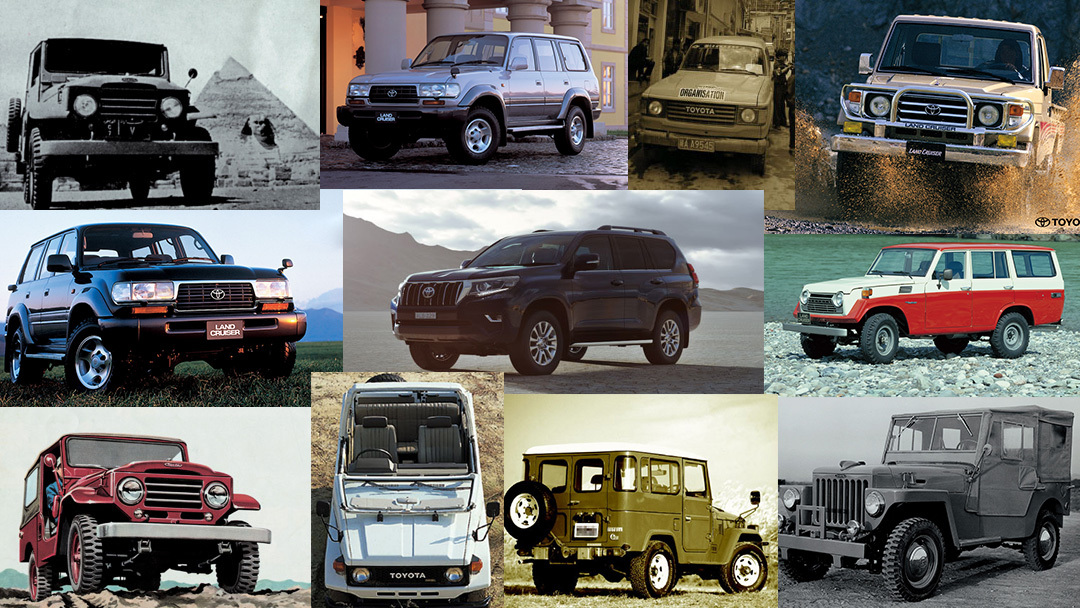
Toyota Landcruisers Ultimate Guide 2019
There aren’t a lot of SUVs today that can match the Toyota Land Cruiser. Its solid size together with its ability to give people a smooth ride even in rough terrain make it a one-of-a-kind vehicle to have.
Its production began in 1950 and with the accumulated technology advancement for over more than 60 years, it has become Toyota’s longest running series.
There are different models of the Toyota Land Cruiser that fall into two different classes depending on what suits your need. They can be categorized as the comfort-oriented models and the off-road oriented models.
In this ultimate guide, we’ll be presenting you with the history behind the landcruiser, some tips and specification details on the Toyota Land Cruiser varieties that you should check out for 2019.
Comfort-Oriented Models
During its introduction in the market in 1950, Toyota Land Cruiser was popular for its off-road capabilities and durability. The company continued to produce the vehicle with this feature until the late 1960s when they decided to also gear towards improving the comfort of the interior. The models back then were very box shaped and clunky when compared to today’s designs.
We will discuss all the comfort-oriented models starting from the latest series down to the oldest.
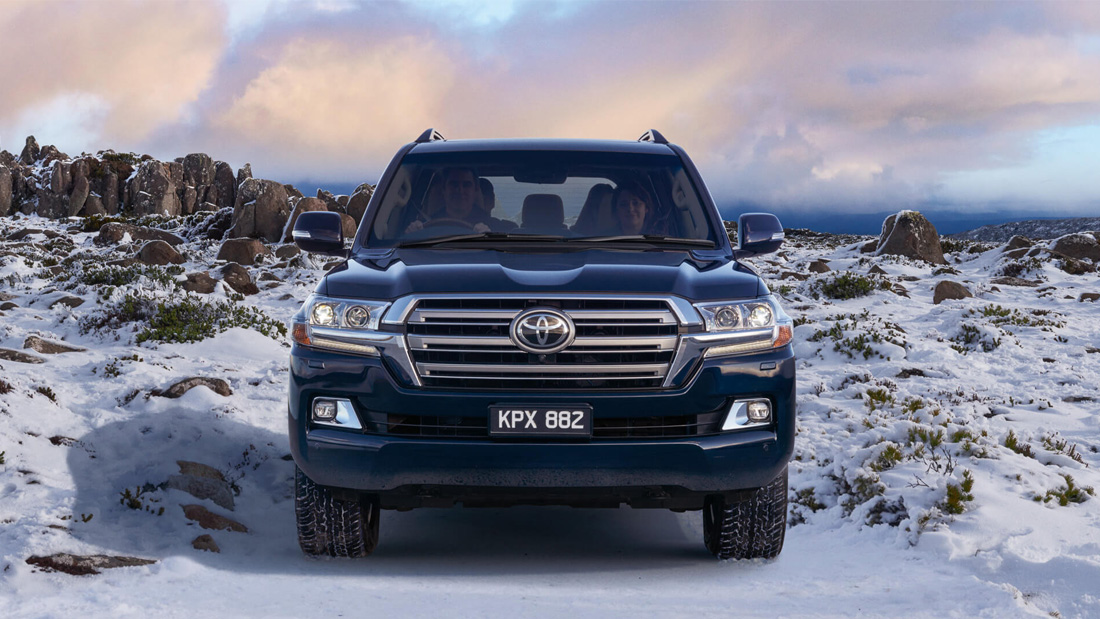
J200 Series (2007 – Present)
Following the 100 series which was first introduced in 1998, the redesigned Toyota Land Cruiser was introduced in late 2007 which are known as the 200 Series.
The 200 Series offered many features and upgrades that are not available in the previous series like the aesthetic and cosmetic changes made to the body and interior including:
1. Smart Entry — When the remote is near the vehicle, a sensor is triggered prompting the car to open once the user touches the door handle.
2. Smart Start — This feature lets you start and stop your car without using a key.
3. 4-zone Automatic climate control – This advanced system allows the driver and passengers to set and adjust their own temperature with outlet vents increased from 18 to 28 (Sahara models).
4. 10 airbags (VX & Sahara)
5. More durable and lighter frame
6. Rear-seat DVD entertainment system (2019 model)
7. Ventilated and heated seats (2019 model)
8. Leather-trimmed, heated steering wheel
Advanced driver assist technologies not offered on previous models, including:
1. CRAWL, a four-wheel drive advanced control system that operates like an off-road cruise control, automatically maintaining a low uniform vehicle speed using brakes and modulates the throttle
2. Downhill Assist Control
3. Multi-terrain Anti-lock braking system (ABS)
4. Kinetic Dynamic Suspension System (KDSS), allows for greater wheel articulation
5. An optional rear-view camera (VX)
6. Leather seats are available in full option (VX)
7. Multi-terrain monitor, press a button to display front, rear, and side camera views on the 9-inch navigation screen (2019 model)
8. Torsen limited-slip differential (2019 model)
Transmission and engine improvements include:
1. Toyota VD engine - An all-new optional V8 diesel engine. This is a twin-turbocharger version of the previous engine used in the 70 series.
2. Automatic transmission measure on all trim levels of the 200 Series including a five-speed manual transmission assigned to the 4.0 L GX models which are available only in select regions, a five-speed automatic gearbox feature for the 4.7 L petrol models, and a 4.5 L diesel model that bears a six-speed automatic.
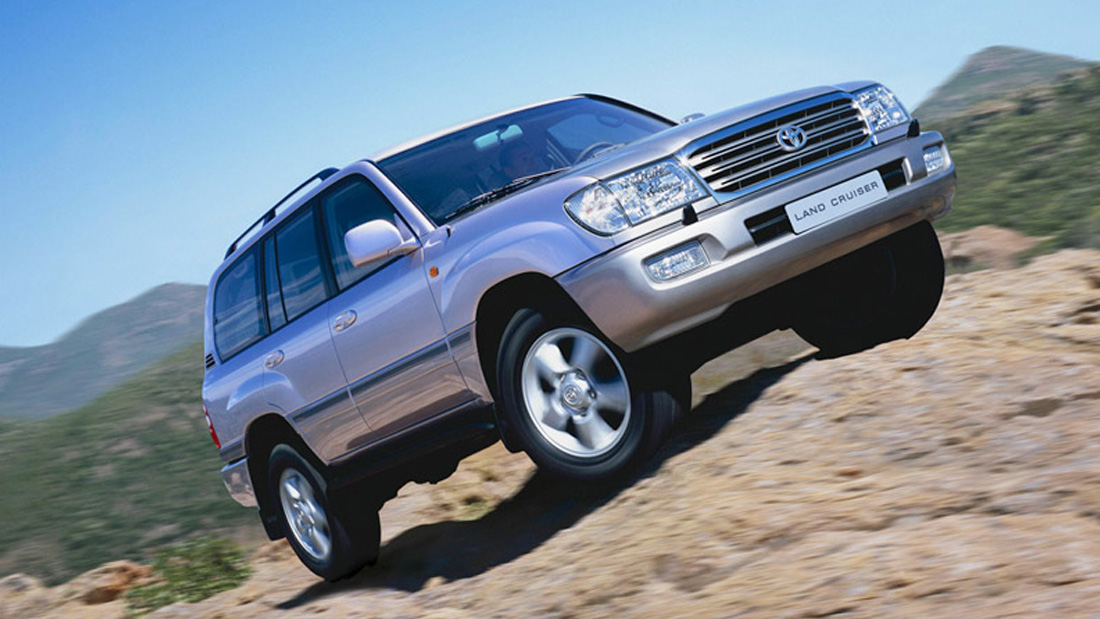
J100 Series (1998–2007)
The 100 series Land Cruiser models were presented to take over the 8-year-old 80 series in January 1998. There are two different versions of the 100-series, the 100 and the 105. The two versions look very similar however, there are notable differences when it comes to the bodywork.
The most evident detail is that the front end of the vehicle generally appears lower than the rear on the 100 models due to its IFS. The other noticeable difference is the design of the wheels. The 100 models have relatively flat wheel designs. On the other hand, the 105 models have dished wheels.
Regardless of these differences and official model names, both series are known as the 100 series.
Also, the introduction of a V8 engine was a breakthrough and also a first for a Land Cruiser and was specifically intended to boost the sales in the North-American market, where it was the only engine available.
Generally, the 100-series has lived up to the expectation of being a durable and reliable vehicle.
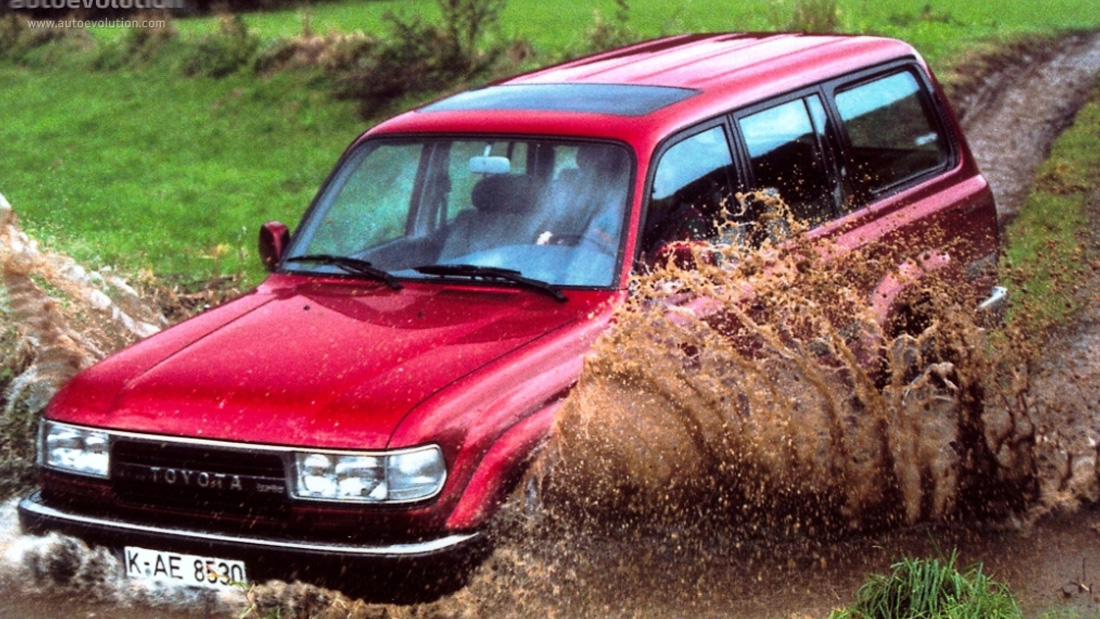
J80 Series (1990–1997; 2008)
The Land Cruiser 80 series was officially introduced in early 1990. In this series, comfort and style was being introduced on top of its original and established off-road features thus gaining worldwide attention. Here is an overview of the 80 series milestones:
1. 1990 – The 80 series station wagon was launched replacing the 60 series. A new generation of diesel engines was also introduced.
2. 1991 – A fuel injected version of the 3F (The 3F-E) was introduced to the Australian market.
3. 1993 – An advanced 24-valve, 4.5 L six-cylinder petrol engine, 1FZ-FE was introduced.
4. 1994 – Land Cruiser Blue Marlin (FZJ80R) was launched. It is a limited edition Land Cruiser sold into the Australian market.
5. 1995 – Driver and passenger airbags were introduced as were adjustable shoulder-belt anchors and an anti-lock braking system. The "T O Y O T A" badge was replaced with the modern Toyota logo.
6. 1997 – An 80 series Land Cruiser Collector’s Edition was manufactured and sold chiefly for collectors.
7. 1997 – "40th Anniversary Limited Edition" models 4744 and FZJ80 Land Cruisers were sold in the United States market.
8. 2008 – The final 80-Series vehicle was manufactured in Venezuela. It was the only country that produced the vehicles even after production had officially ended in Japan in 1997.
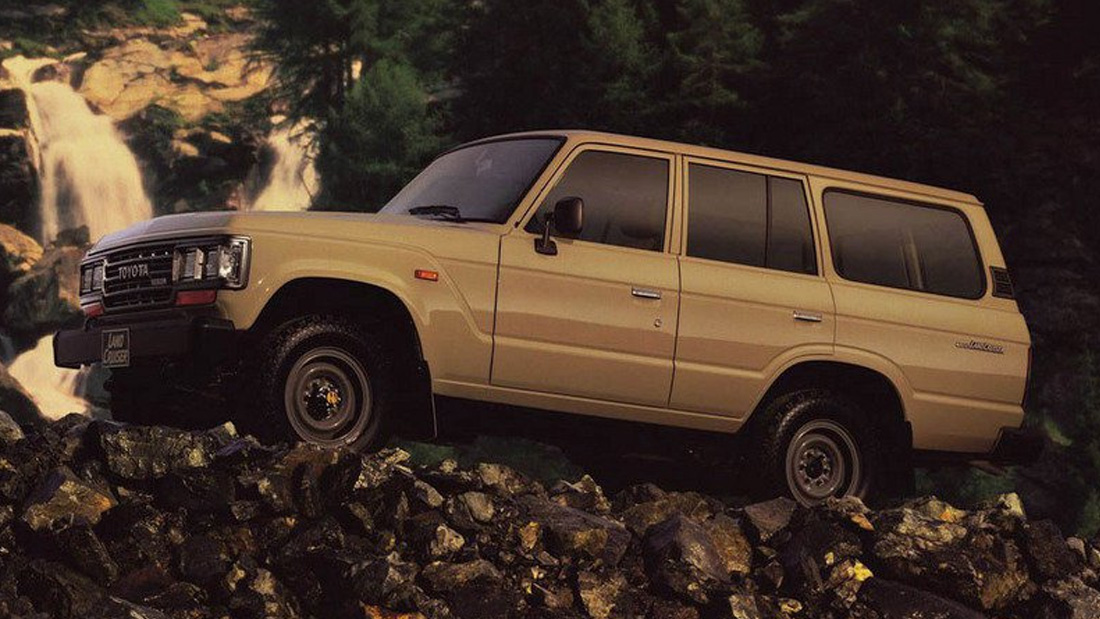
J60 Series (1980–1989)
In 1980, the Land Cruiser 60 series was launched and production continued until the year 1990 for most markets. However, the Cumana plant located in Venezuela continued to produce these models until 1992 for the local market.
The evolution from a reliable heavy duty utility vehicle to an RV (Recreational Vehicle), the debut of the 60 series changed the general concept of 4WD vehicles together with the addition of the luxury GX grade.
Its body and interior look absolutely different from its predecessor, the 55 series. The 60-series underwent a number of minor mechanical changes between some of the models. In that time, it took on power windows and automatic transmission as well as other luxury trimmings.
The 60 series was available in the following solid exterior colours: Alpine White, Brown, Desert Beige, Freeborn Red, Royal Blue; and in the following metallic exterior colours: Charcoal Gray, Cognac, Gray-Blue, Rootbeer, Sky Blue, Stardust Silver.

J55 Series (1967–1980)
The 55 series of Land Cruiser was manufactured from 1967 through 1980. Toyota refers to the FJ55G and FJ55V as the first "real" station wagon in the Land Cruiser series, a breakthrough marking the beginning of the station wagon branch.
Of all the Land Cruiser models produced from the beginning, 55 was the first to have fully enclosed box frame members. Looking at all Land Cruiser wagons sold in the U.S., including the FJ45, 55 solely is the series that does not have a tailgate and hatch in the rear. Instead, it features a tailgate only that has an electrically operated window that can be retracted into the tailgate. Here is a brief overview of the history of 55 series:
1. 1967 – Production of the FJ55 commenced. The FJ55 was a 4-door station wagon version based on the FJ40's Drive-train, replacing the 4-Door FJ45V (I). In America, it was nicknamed as the "Moose". It has also been nicknamed as "pig" or an "iron pig". It had a longer wheelbase and was made to be offered specifically in Australia and North America.
2. Jan 1975 - The F engine was replaced by the 2F engine.
3. The Model 56 is produced in Japan only and it has a 2F engine.
Off-Road Oriented Models
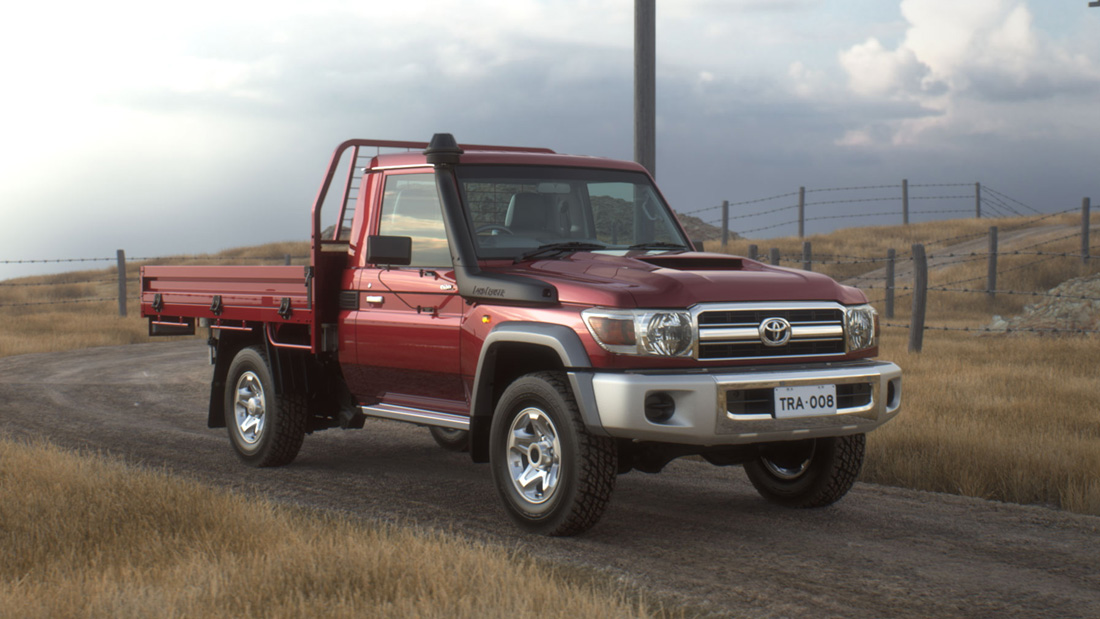
J70 (1984 – Present)
The 70 Series is a family of Toyota Land Cruiser models introduced in 1984 (replacing the quarter-century old 40 series) and is still being produced even until the present day.
The Land Cruiser 70 series is an upgraded version of the 40 series in terms of its design and other technological updates while preserving the concept of rigidity, reliability, and durability in which it was best known for.
1. 1984 – The all-new 70-series was introduced to the market
2. 1985 – The LJ71G, a derivative of the BJ70 model was added which had a 2L-T-type engine (4-cylinder, 2,446cc, 85PS, and 19.2kgm). This model was registered as a passenger car type wagon. In the export model, it was known as the Light Land Cruiser or the Land Cruiser II which was later on named as the 70 Prado.
3. 1990 – New-generation diesel engines were introduced including a 3.4 L five-cylinder SOHC naturally aspirated motor (1PZ), and a 4.2 L six-cylinder SOHC naturally aspirated motor (1 HZ).
4. 1993 to 1996 – The KZ 3.0 L turbocharged diesel engine was used replacing the LJ in the 70 series in European markets where this was popularly known as the KZJ70 model.
5. 1999 – During this time, the Troop Carrier was changed to the 78 series, the pick-up version was tagged as the 79 series, and the short-wheelbase version was made obsolete in the markets. The main changes applied mechanically included the coil sprung live front axle; longer rear leaf springs; 5-bolt wheels; upgraded front indicators; a new design for the steering wheel; and, a longer wheelbase in the cab-chassis, thus increasing the storage capacity in the rear.
6. 2007 – The 1VD-FTV, Toyota's first turbo diesel V8 engine for the 70 Series Land Cruiser, was released in some countries. Other changes include the addition of a 4-door medium-wheel-base model (the 76) and an innovative front for all of the models.
7. The 2014-15 30th Anniversary Series 70 was marketed in Japan as a 4-door wagon or 4-door pickup with the 1GR-FE V6 petrol engine and 5-speed manual transmission.
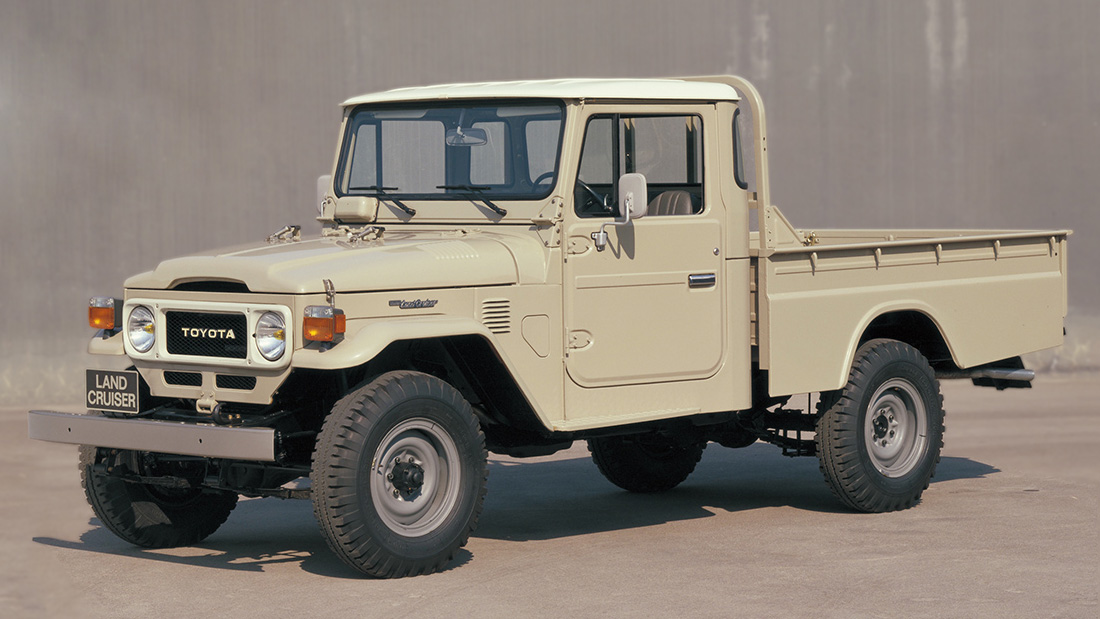
J40 (1960–1984)
The production of the J40 series of Land Cruisers started in the year 1960 and ended up until 1984. Although looking almost similar on the exterior, the 20 and 40-series varied significantly on the interior. In addition, defying the eye, the construction of the body was vastly different. The 40 series had greatly widened its range with approximately a quarter of a century of collected technology developments.
The J40 series was manufactured with both petrol and diesel engines. The B series has a 4-cylinder diesel; the H series has a 6-cylinder diesel, while the F series has a 6-cylinder petrol motor.
The majority of the 40 series of Land Cruisers were made as 2-door vehicles. This model was available in 3 wheelbase versions: short (J40/41/42 models), medium (J43/44/46 models) and long (J45/47 models).
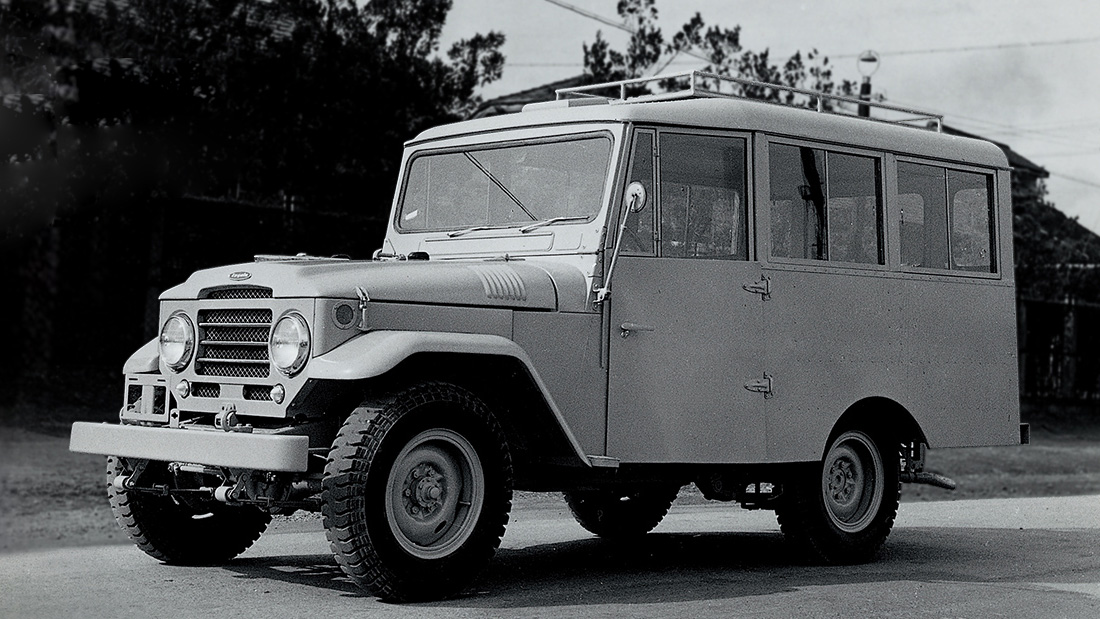
J20, J30 (1955–1960)
During Japan's post-war rehabilitation, Toyota already had been looking toward the possibility of exporting its domestic vehicles overseas. Toyota knew just how valuable the Land Cruiser was so they took this huge step forward into further making their dream a reality through expansion in their market.
1. 1955 – For export reasons, the 20 series was designed to look more like a civilian type of vehicle in comparison to the BJ. It also had more stylish bodywork and features a better driving comfort because of longer four-plate leaf springs which had been adapted from the Toyota Light Truck. Using a 135 PS (99 kW) 3.9 L six-cylinder Type F gasoline engine made it powerful. However, it still only had a three-speed gearbox. They also moved the engine forward making the interior more comfortable. The 20 Series still had no low range, but it had synchronism on the third and fourth gears.
2. 1957 – A 4-door Station Wagon was introduced as the FJ35V on a 2,650 mm (104.3 in) wheelbase. Also in this year, Land Cruisers were first introduced to Australia by B&D Motors as FJ25/28 cab chassis with bodies made in the country marking these as the first Japanese cars to be exported to the country.
3. 1958 – FJ25 production took up in Brazil making a breakthrough as the first Toyota vehicle built outside Japan. These were marketed and known as the "Toyota Bandeirante" from January 1962. The Bandeirante has a Mercedes-Benz diesel engine as it replaced the Toyota petrol engine. The FJ25 models were manufactured until August 1968 in Brazil. Production numbers were fairly low; in 1965 the produced cars totalled to less than a thousand.
How Toyota Landcruisers Have Evolved Over The Years

BJ and FJ (1951–1955)
The concept of Toyota Land Cruiser happened during the Korean War. With the increased demand in a military light utility vehicle, Toyota was asked to create a prototype of the then-popular Jeep. Toyota responded to this challenge thus, giving birth to the Toyota “Jeep” BJ combining a B-type engine with a Jeep model.

Because of its brilliant features and performance, BJ, later on, became the official patrol car of National Police Agency. The BJ was later on renamed into “Land Cruiser” as the company’s answer to trademark violation claims by the Willys Company.
The Toyota Landcruiser has been through a lot of change and stood the test of time. You can really see how far the brand has pushed the vehicle to not only perform but to evolve.
Search the John Hughes dealership for Toyota Landcruiser’s today.
